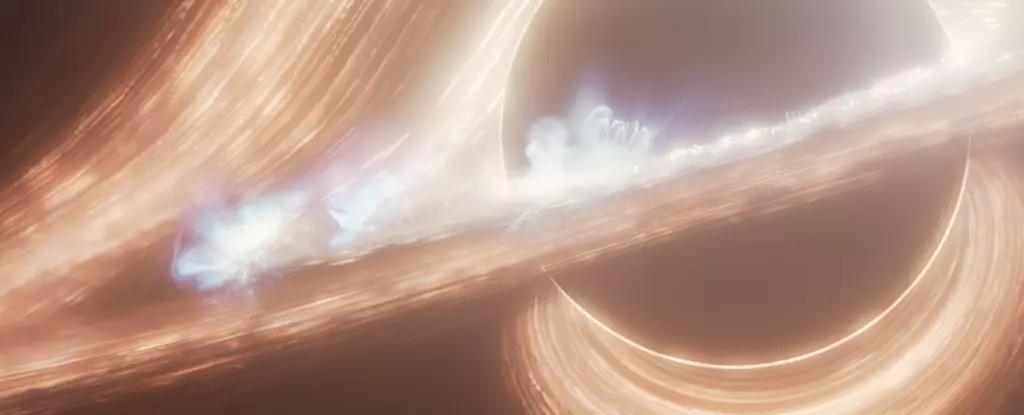At the heart of our Milky Way galaxy lies Sagittarius A*, a supermassive black hole that, while less ravenous than its counterparts scattered throughout the universe, presents a wealth of intriguing behaviors. Recent observations conducted by NASA’s James Webb Space Telescope (JWST) have unveiled a continuous display of cosmic flares erupting from the vicinity of this enigmatic entity. These flares, varying both in intensity and duration, provide a unique window into the complex dynamics occurring around Sagittarius A*, revealing new aspects of its behavior.
The flares, as documented by JWST, occur approximately five to six times daily, accompanied by numerous smaller bursts that pepper the galactic environment. This flaring activity challenges previous assumptions about the inert nature of such black holes, implying instead a vibrant and dynamic ecosystem surrounding them. Farhad Yusef-Zadeh, the lead researcher from Northwestern University, articulated the unexpected nature of these findings, noting the erratic brightness changes, akin to cosmic ‘fireworks’ that captivate observers. This unpredictability suggests that our understanding of black hole activity is far from complete.
To capture these phenomena, researchers utilized JWST’s Near-Infrared Camera (NIRCam) over 48 hours of observing time, segmented into multiple sessions throughout the year. Their expectations leaned toward observing flares, but not to the degree of dynamism that the data presented. The team hypothesizes that the observed flares originate from two distinct processes. The first is associated with turbulence within the accretion disk — a swirling mass of hot gas that encircles the black hole. This turbulence leads to compression of the disk’s magnetically charged gases, producing brief bursts of radiation analogous to solar flares on our Sun.
Magnetic Reconnection: A Cosmic Phenomenon
Further compounding the activity are larger bursts linked to magnetic reconnection events. When two magnetic fields intersect, they can unleash powerful bursts of energy, manifesting in the form of energetic particles that rush outward at nearly light-speed. This process of reconnection serves as a pivotal mechanism in our understanding of astrophysical activity near black holes, drawing parallels to familiar phenomena such as static electricity. Yusef-Zadeh aptly summarizes this mechanism, highlighting that while the processes around black holes are considerably more intense than those we observe in our solar system, the underlying principles may mirror those of traditional solar flares.
One particularly groundbreaking discovery involves a timing discrepancy observed between the light emitted at shorter wavelengths versus that at longer wavelengths. Researchers noted that the brightness of the shorter wavelength emissions would fluctuate moments before those of their longer counterparts — a phenomenon that had not previously been documented in such a context. This lag, measured in seconds to almost a minute, could indicate varying energy loss rates among particles released during these flaring events, hinting at more complex interactions within the magnetic fields at play.
Future Directions for Research
Looking forward, researchers aim to secure extended observation periods with the JWST, which would be instrumental in minimizing noise interference and refining the data captured during these critical observations. Enhanced time on the telescope may yield greater clarity regarding the nature of these cosmic events, potentially illuminating features and behaviors that were previously obscured by background noise. The quest for knowledge surrounding Sagittarius A* is just beginning, and as astronomers delve deeper into the intricacies of these black hole surroundings, we may uncover revelations that refine our understanding of the universe itself.
The findings surrounding Sagittarius A* symbolize a significant advancement in astrophysical research, reshaping our comprehension of black hole dynamics. As the JWST continues its observational campaign, the implications of these explorations extend beyond mere curiosity; they challenge and expand upon the existing frameworks within which we understand both our galaxy and the broader universe. The ongoing study of these cosmic phenomena promises to unveil crucial truths about the fundamental processes governing galactic behavior, reminding us of the perpetual mystery of the cosmos.


Leave a Reply